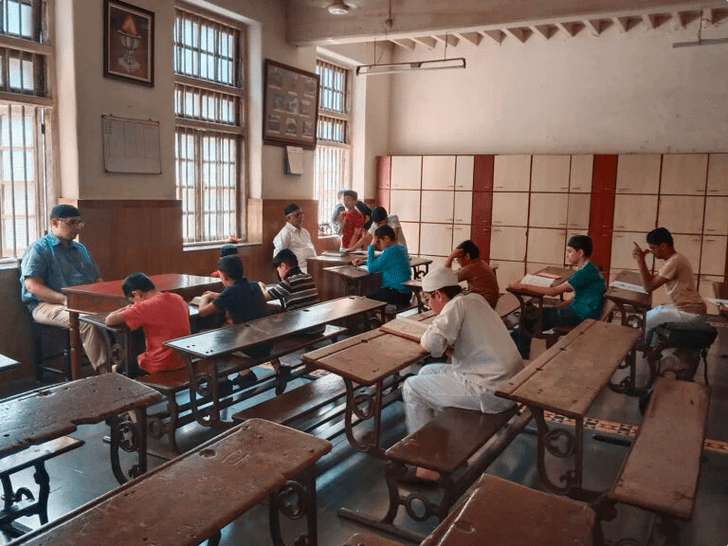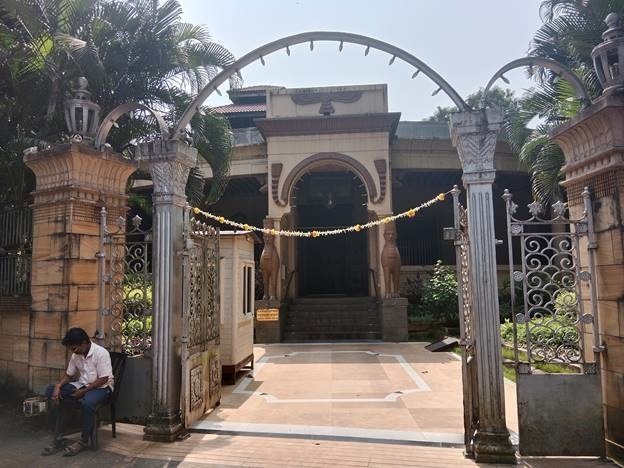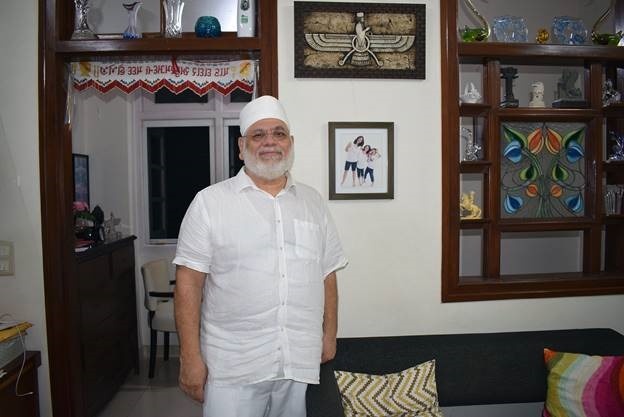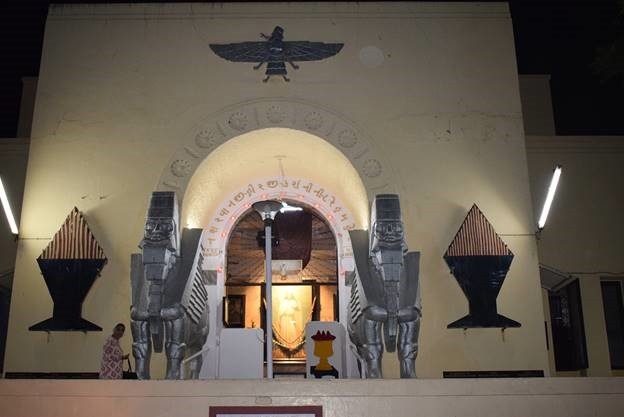In a leafy neighborhood of central Mumbai, classic “Parsi-style” bungalows with their deep porches and balconies adorn the streets, a historic Parsi school has been recently renovated and at the Dadar Athornan Institute, 14 students dressed in T-shirts and skullcaps are immersed in learning the sacred scriptures and rituals of the Zoroastrian faith.
Article by Priyadarshini Sen | Religion News Service
Students at the Dadar Athornan Institute learn theology and ritual practices of the Zoroastrian faith in Mumbai, India, on Oct. 11, 2023. (RNS photo/Priyadarshini Sen)
But while this community still practicing the world’s oldest monotheistic faith — likely the biggest single Zoroastrian colony in the world — the number of Parsis has been whittled down to close to 50,000.
More pressing, the dwindling in numbers has put priesthood, the lifeblood that has sustained the community for centuries, in peril.
“Training in higher liturgical services is essential to the continuance of the Zoroastrian faith,” said Dinshaw Tamboli, the chairman of the World Zoroastrian Organization Trust Funds in Mumbai. “The number of mobeds qualified to perform such ceremonies is not enough.”
In Zoroastrianism, mobeds serve as spiritual guides to build a bridge between the laity and their faith. They are seen as alaat, a vehicle through which divine energy flows, through the performance of rites and rituals that have held them together for centuries.
Ramiyar Karanjia, a genial priest who has been principal of the institute for nearly three decades, said the number of “erudite mobeds” — Zoroastrian clerics of a particular rank — has been declining for years, but as the community itself dwindles, fewer Parsi families are seeing the priesthood as a viable career option.
As discouraging is the rigor of the education. The institute’s boys, beginning at age 7 or 8, wake up at 5:30 a.m. to study Scripture, along with Zoroastrian liturgy, religion, history and its various scriptural languages, including Avestan, Sanskrit, Gujarati and Persian.
A Parsi fire temple visited frequently by Zoroastrians in Mumbai, India, Oct. 11, 2023. (RNS photo/Priyadarshini Sen)
Two decades ago, no fewer than 25 students were enrolled at the institute, and another seminary in West Mumbai was thriving. Eight years ago that school was turned into a prayer hall due to a lack of students.
“The role of mobeds in the religious life of Parsis can’t be understated, and that’s why we are very worried,” said Karanjia, using the Persian word for Zoroastrian cleric.
Noshir Dadrawala, a Zoroastrian scholar based in Mumbai, said that fewer than 20 priests are now available to perform higher liturgical ceremonies that require expertise, knowledge and commitment.
Tamboli described a ceremony that takes place over more than two weeks, during which two erudite priests consecrate the urine of a sacred albino bull into “nirang.” Without the nirang, Tamboli explained, most Indo-Iranian religious ceremonies that have continued in India over 1,300 years are not possible.
“The death of full-time priests at consecrated places of worship has severely impacted our cultural heritage,” said Dadrawala. “If the number of priests diminishes further like what happened in Iran after the Muslim conquest in the seventh century, our ritual edifice will crumble.”
Zoroastrianism was the main faith of Iran and some surrounding territories for more than 3,000 years, until the last Persian imperial dynasty, the Sasanians, was toppled by Muslim invaders in 651 A.D. To escape religious persecution and conversions, many Zoroastrians left for India in the eighth and 10th centuries, where they came to be known as Parsis.
In India, the hereditary priestly class adapted quickly to local conditions, built connections with diverse communities, ventured into trade and industry, and eventually played a critical role during the independence movement against colonial rule.
But according to a 2011 census, India’s Parsi population has dropped 18% since 2001. In 2014, the Ministry of Minority Affairs produced a series of advertisements as part of its “Jiyo Parsi” (“Long Live Parsis”) scheme, with taglines like “We are superior. We are cultured. We are educated. We are about to be extinct. Get married early, have babies early.”
The population decline has not only reduced the number of candidates for priesthood, but the rewards of being a priest.
“Priests are paid meagerly, have unusual hours of work, get no pension, post-retirement benefits or designated holidays,” said Khurshed Dastoor, the high priest of Indian Parsis, who heads the most sacred fire temple, in Gujarat. “There was respect in priesthood earlier, but now people are opting out of it.”
Khurshed Dastoor, a Parsi high priest who heads a sacred fire temple in Gujarat, India, at his home in Mumbai on Oct. 10, 2023. (RNS photo/Priyadarshini Sen)
With no support from the government, private charities have helped priests deal with financial hardships but Dastoor said that’s not enough to sustain them.
Many young Parsis, in addition, are marrying outside of the community and moving overseas to seek better opportunities. As a result, there are fewer Zoroastrians to attend rituals at fire temples, as Zoroastrian houses of worship are known, or to commission priests to perform elaborate purification rituals, worship and sacrifice.
While some Parsis have welcomed para-priests — laypeople who are licensed to perform lower liturgical ceremonies and tend to nonconsecrated fires — the hereditary priesthood remains the community’s backbone.
“In some fire temples where mobeds are not available, para-priests tend to the fires, but in the event they tend to a consecrated fire, elaborate ceremonies have to be performed to repurify it,” said Tamboli.
Some Parsis believe the answer is to allow young boys from priestly families to take up the vocation only as a “calling,” not their sole profession.
Vispy Wadia, who heads the Association for Revival of Zoroastrianism in Mumbai, founded a fire temple in Pune in 2017 where non-Parsis are allowed to enter and interfaith couples are warmly welcomed.
A Zoroastrian temple in Mumbai. (RNS photo/Priyadarshini Sen)
Wadia also believes priesthood can be revived if the community is less adamant about hereditary priesthood as the high point of the Zoroastrian faith.
“If we allow more flexibility within the structure, the problem can be solved,” said Wadia. “Our religion should make space for the laity to infuse life into priesthood if they feel it’s their calling.”




